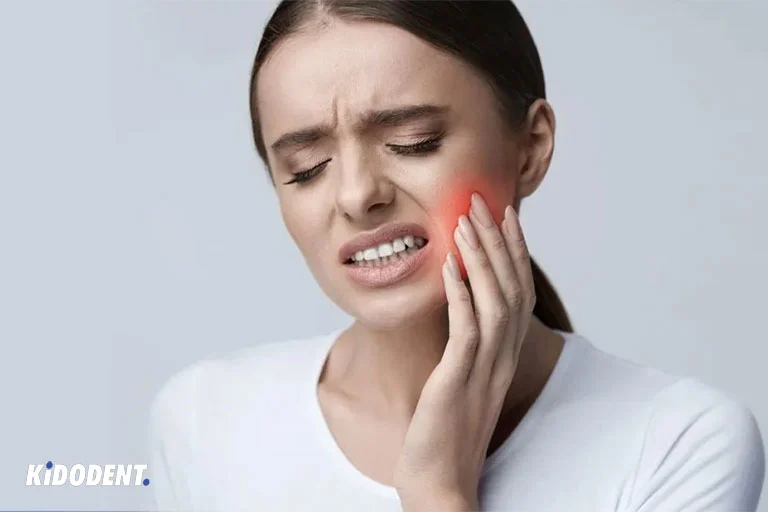The jaw joint, or TMJ, is one of the most complex sets of joints in the human body. When you hear the word joint, you might first think of those in your knees, fingers, wrist, or other parts helping you with mobility. But the temporomandibular joint (TMJ) in your jaw has a critical role in your life, providing complicated and necessary movements, including eating and speaking.
What is TMJ?
Temporomandibular joint (TMJ) or jaw joint connects your lower jaw bone (mandible) to the temporal bone of your skull. TMJs are located on each side of your head in front of your ear. These joints along with the muscles allow the jaw to move in side to side, up and down, and in and out motions. So, they let your jaw open and close, and your speaking and eating take place.
TMJ disorders are related to the jaw muscles, temporomandibular joints, and the associated nerves. They can cause pain in your jaw joint and the muscles involve in the jaw movements when not working properly. They are part of a group of health conditions which are becoming known as TMD—which stands for temporomandibular disorders.
What are the symptoms of TMJ disorders?
The most common signs and symptoms of TMJ disorders can include:
- Jaw pain or tenderness
- Pain in one or both sides of your temporomandibular joints which can be felt in the area near your ear
- Facial pain
- Limited jaw movements
- Locking of the jaw joints, making difficulty in opening or closing your mouth
- Clicking or popping sound from the TMJ area which can be felt with opening or closing your mouth or when chewing
- Earaches or pain and pressure behind your eyes
- Grinding or clenching of the teeth
- Headaches
- Teeth sensitivity
- A jaw that goes out of place which causes the improper fit of the upper teeth on lower teeth
As you see symptoms and signs of TMJ can vary. You may feel clicking sounds or grating sensations in the jaw joint upon opening and closing your mouth, or you may have debilitating pain and dysfunction in the jaw. Some people may have one or multiple symptoms at a time. And do remember that not every jaw pain may be due to TMJ disorders, so discuss the issue with your dentist or doctor.
What causes TMJ disorders?
In many cases, the exact cause of TMJ disorder is often not clear. Sometimes, your pain may be due to the impact of a jaw injury or involuntary grinding or clenching of teeth during sleep, which is known as bruxism. The jaw joints and disc may also displace, erode, or get damaged due to arthritis or genetic factors.
There are various reasons why you may develop the risk of TMJ disorders and thus pain. The main causes include:
- Various forms of arthritis, such as osteoarthritis or rheumatoid arthritis
- Injuries to the jaw area
- Chronic grinding or clenching of teeth (bruxism)
- Stress
- Prolonged tension on the jaw due to malocclusion or missing teeth
How are TMJ disorders diagnosed?
To diagnose TMJ disorders, your dentist or doctor will first discuss your symptoms and examine your jaw. They will check the motions in your jaw and listen for clicking or popping sounds when you open or close your mouth.
Your dentist can take dental X-rays to examine your teeth and the bones in your jaw. You may also require a more comprehensive medical assessment, such as CT scans or MRI to get a detailed picture of the jaw joints, disc, and soft tissues.
What are the treatments for TMJ disorders?
Most people with TMJ problems may experience temporary pain and discomfort which can be relieved with simple home care and self-management. In some cases, the symptoms may go away without any treatment.
Since there are various causes for TMJ disorders, your dentist or doctor will discuss your treatment options. They typically recommend home treatments and conservative methods. If these methods have failed, you may benefit from surgical treatments.
Home treatments
Here are some self-care practices at home which can be helpful in easing your symptoms of TMJ:
- Eat soft foods
- Avoid extreme jaw movements, such as chewing gum or eating very hard, crunchy, and chewy foods
- Apply ice to reduce swelling
- Practice stress reduction techniques
Therapies
Consult your dentist about using a mouthguard or therapies to prevent pain or damage to the oral structures and help improve your jaw function. Common therapies for TMJ disorders are:
- Wearing a mouthguard. Mouthguards are worn over your teeth to protect not only teeth but also soft tissue against the destructive effects of teeth grinding or clenching. Your dentist can create a custom mouthguard specifically designed for TMJ disorders to relieve jaw pain.
- Physical therapies. You can practice stretches, relaxation, and physical exercises to strengthen jaw muscles and relieve tension in your jaw.
Medications
For short-term use and in low doses, your dentist may prescribe medications along with therapies and home treatments to help relieve your pain. Common medications that can be used for TMJ disorders include:
- Pain medications and anti-inflammatory drugs for a few days
- Muscle relaxers to relieve muscle spasms and other tense feelings in your jaw caused by TMJ disorders. They are prescribed for just a few days or weeks.
- Antidepressants which your medical professional recommends for a limited time and in low doses only
Surgeries and procedures
Finally, if nonsurgical methods seem not to help treat your TMJ disorders, your doctor can recommend surgery to treat your condition.
Here are the procedures associated with TMJ disorders:
- Dental treatments such as implants or dentures to replace missing teeth or restore damaged teeth with filling or dental crown
- Orthodontics to realign misaligned teeth and malocclusion in the bite
- Botox injection
- Arthrocentesis
- TMJ arthroscopy
- Open-joint surgery
